Plans for colour television in the United Kingdom date back as early as 1943, when the top-secret Hankey committee was set up by the wartime Government to make recommendations for the reinstatement of the Television Service for when World War Two was over. However black and white television had already established itself to a reasonable degree prior to 1939, plus the technology for colour television had not quite developed into a practical proposition. Also of course immediately after the war the country’s economic resources were being stretched simply providing essentials such as building new homes and factories to replace what had been bomb-damaged, so a new colour service was out of the question for at least ten years.
Meanwhile America, which was largely uninvolved in the war until nearly the end, was busy developing and refining television technologies developed by Europe and itself, which over time evolved into a standard laid down by the National Television Standards Committee, or NTSC. However this NTSC system suffered from being the first of its kind – the system has fundamental colour hue inconsistency problems (especially with early receivers), hence its unofficial title of ‘Never Twice the Same Color’.
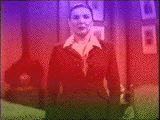 Prior to the 1960s, this is how a few people had their first view of ‘colour’ television – in the 1950s you could buy a ‘colourising’ filter, place it over your existing black and white screen, and let your imagination do the rest… John Logie Baird, the pioneer of television, was working on stereoscopic colour television shortly before his death in 1946, and the Americans were conducting experiments. But the technology was very complex; the problem was how to transmit colour information alongside an existing black and white image, therefore maintaining ‘backwards’ compatibility with existing receivers.
Prior to the 1960s, this is how a few people had their first view of ‘colour’ television – in the 1950s you could buy a ‘colourising’ filter, place it over your existing black and white screen, and let your imagination do the rest… John Logie Baird, the pioneer of television, was working on stereoscopic colour television shortly before his death in 1946, and the Americans were conducting experiments. But the technology was very complex; the problem was how to transmit colour information alongside an existing black and white image, therefore maintaining ‘backwards’ compatibility with existing receivers.
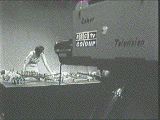 From 10 October 1955 the BBC experimented with colour television, firstly with a 405 line version of the American NTSC system – the first generally available electronic-based system of colour transmission designed for backwards compatability with existing monochrome transmissions. Low power test transmissions were from Alexandra Palace (one of the original studios being re-equipped for the purpose), using specially made receivers, but to start a public 405-line colour service at this stage would result in Britain having to commit long term to the pre-war 405-line standard which was out of step with continental Europe (which used the superior post-war 625 line system).
From 10 October 1955 the BBC experimented with colour television, firstly with a 405 line version of the American NTSC system – the first generally available electronic-based system of colour transmission designed for backwards compatability with existing monochrome transmissions. Low power test transmissions were from Alexandra Palace (one of the original studios being re-equipped for the purpose), using specially made receivers, but to start a public 405-line colour service at this stage would result in Britain having to commit long term to the pre-war 405-line standard which was out of step with continental Europe (which used the superior post-war 625 line system).
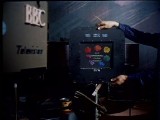
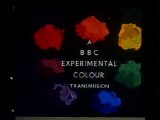
The promotional film This Is The BBC gives an insight into one of the London-only experimental colour television tests performed after closedown during the late 1950s. Unless you were one of the small number of people who had access to an experimental colour TV receiver, anyone who caught a glimpse of these tests at home would of course have only seen them in black and white.
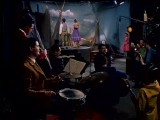 The song used in this particular test broadcast was “Early one morning”, and the participants had to wear different makeup compared with that used for monochrome broadcasts as well as brightly-coloured costumes featuring different colours.
The song used in this particular test broadcast was “Early one morning”, and the participants had to wear different makeup compared with that used for monochrome broadcasts as well as brightly-coloured costumes featuring different colours.
 A major problem with early colour television equipment was its unreliability combined with the huge number of adjustments that were required for a good quality picture. The colour television receivers used for the BBC tests were individually handbuilt by companies such as Bush and Philips, with various specialist components such as colour television tubes having to be sourced from America; the sets themselves were designed to be easily maintainable by engineers despite their huge complexity, which was particularly true of the receivers constructed for the later PAL tests.
A major problem with early colour television equipment was its unreliability combined with the huge number of adjustments that were required for a good quality picture. The colour television receivers used for the BBC tests were individually handbuilt by companies such as Bush and Philips, with various specialist components such as colour television tubes having to be sourced from America; the sets themselves were designed to be easily maintainable by engineers despite their huge complexity, which was particularly true of the receivers constructed for the later PAL tests.
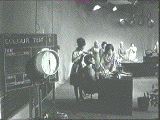 Later the French developed SECAM (Sequential Colour with Memory), and Telefunken in Germany developed PAL (Phase Alternate Line) which represented two differing approaches of solving the colour problems encountered with NTSC, and the BBC experimented using both, though there were other problems to be solved. The insensitivity and inaccuracy of early colour tv cameras and its associated circuitry meant that without adjustments the resulting picture either had a colour cast and/or made flesh tones look too red, so extra studio lighting and make-up was required. In 1961 a committee meeting in Stockholm allocated UHF frequencies for 36 European countries, enabling the Government to plan ahead.
Later the French developed SECAM (Sequential Colour with Memory), and Telefunken in Germany developed PAL (Phase Alternate Line) which represented two differing approaches of solving the colour problems encountered with NTSC, and the BBC experimented using both, though there were other problems to be solved. The insensitivity and inaccuracy of early colour tv cameras and its associated circuitry meant that without adjustments the resulting picture either had a colour cast and/or made flesh tones look too red, so extra studio lighting and make-up was required. In 1961 a committee meeting in Stockholm allocated UHF frequencies for 36 European countries, enabling the Government to plan ahead.
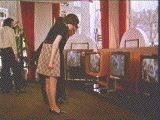 After much deliberation, the government chose the PAL system – which although was more complex (hence expensive) it gave the best results. Most of Europe also chose PAL, and BBC2 started its UHF 625-line colour service on 1 July 1967 with Wimbledon tennis coverage (there were a few earlier test transmissions), though initially only a few programmes in the schedule were actually in colour. BBC2’s first colour ident was simply the standard ‘2’ logo electronically-tinted pale blue.
After much deliberation, the government chose the PAL system – which although was more complex (hence expensive) it gave the best results. Most of Europe also chose PAL, and BBC2 started its UHF 625-line colour service on 1 July 1967 with Wimbledon tennis coverage (there were a few earlier test transmissions), though initially only a few programmes in the schedule were actually in colour. BBC2’s first colour ident was simply the standard ‘2’ logo electronically-tinted pale blue.


November 1967 saw the ‘official’ launch of colour programming on BBC2 with a new ident featuring a rotating cube of coloured ‘2’ symbols. Long-running programmes such as Play School, Newsroom, Horizon, The Money Programme and Late Night Line-Up quickly moved to colour production but there were still a few new programmes produced in monochrome mostly due to a continuing shortage of colour production equipment; Television Centre was not comprehensively colour-equipped until the autumn of 1970 though most schools programmes and The Open University were still being produced in black-and-white for a while longer for reasons of cost and perceived lack of demand. By contrast, ITV schools programming moved over to colour production quicker because they saw it as a higher priority despite colour televisions still being a rarity in schools for several years after commencement of colour broadcasting.
 By December 1967 colour was available in London, the Midlands, the North and South of England. Other early colour programmes included The World About Us (which basically used stock colour documentary footage – the first programme featured volcanoes), Almost Human (about domesticated animals) and International Cabaret. The BBC-produced 1968 Eurovision Song Contest was shown live in black-and-white on BBC1 and in colour in West Germany but repeated the next day in colour on BBC2.
By December 1967 colour was available in London, the Midlands, the North and South of England. Other early colour programmes included The World About Us (which basically used stock colour documentary footage – the first programme featured volcanoes), Almost Human (about domesticated animals) and International Cabaret. The BBC-produced 1968 Eurovision Song Contest was shown live in black-and-white on BBC1 and in colour in West Germany but repeated the next day in colour on BBC2.
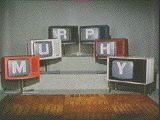 There were many more manufacturers of television receivers in the 1960s than there are today; Sobell, MacMichael, GEC, Ekco, HMV, ITT, and Ferguson were just a few of the more notable ones, though later on more obscure models were imported to meet increasing demand. Early colour television sets used valves and were very bulky, expensive, unreliable, some had poor colour quality, and some sets were prone to overheating. After a succession of house fires people were advised to stay in the same room as their television for one hour after it was switched off.
There were many more manufacturers of television receivers in the 1960s than there are today; Sobell, MacMichael, GEC, Ekco, HMV, ITT, and Ferguson were just a few of the more notable ones, though later on more obscure models were imported to meet increasing demand. Early colour television sets used valves and were very bulky, expensive, unreliable, some had poor colour quality, and some sets were prone to overheating. After a succession of house fires people were advised to stay in the same room as their television for one hour after it was switched off.
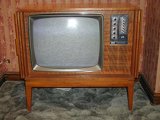 The HMV Colourmaster was a colour television featuring a genuine world-first: an all-transistor chassis with no valves apart from the cathode ray tube which technically speaking is a valve in itself; a design practice that was soon to be universally adopted. Despite a lack of valves, the Colourmaster was still a very bulky television due to the complexity of the transistor circuitry and the sheer bulk of the colour display tube. Available in 19″ and 25″ sizes, the price of the 25″ Colourmaster was an eye-watering £362.18s (pre-decimal) in 1968, so it’s no wonder that colour televisions were usually rented as opposed to purchased outright. (By comparison you could buy a very decent black and white television for a quarter of the price.)
The HMV Colourmaster was a colour television featuring a genuine world-first: an all-transistor chassis with no valves apart from the cathode ray tube which technically speaking is a valve in itself; a design practice that was soon to be universally adopted. Despite a lack of valves, the Colourmaster was still a very bulky television due to the complexity of the transistor circuitry and the sheer bulk of the colour display tube. Available in 19″ and 25″ sizes, the price of the 25″ Colourmaster was an eye-watering £362.18s (pre-decimal) in 1968, so it’s no wonder that colour televisions were usually rented as opposed to purchased outright. (By comparison you could buy a very decent black and white television for a quarter of the price.)
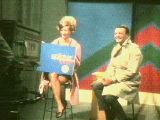 By 1968 many ITV franchises realised that they too had to prepare themselves for a future colour service. The first to do so was TWW, followed closely by ABC: ironically both were to lose their franchise the same year (though ABC joined up with Rediffusion to form Thames). TWW’s first (and hence ITV’s first) colour camera production (pictured) was Colour One – it was directed by Mike Towers (later Managing Director of HTV) and was done purely for internal demonstration purposes. No recording exists because there was nothing available to record it with.
By 1968 many ITV franchises realised that they too had to prepare themselves for a future colour service. The first to do so was TWW, followed closely by ABC: ironically both were to lose their franchise the same year (though ABC joined up with Rediffusion to form Thames). TWW’s first (and hence ITV’s first) colour camera production (pictured) was Colour One – it was directed by Mike Towers (later Managing Director of HTV) and was done purely for internal demonstration purposes. No recording exists because there was nothing available to record it with.
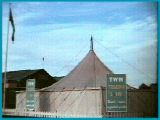 TWW also took out their colour cameras (EMI type 204 Vidicon using mirror optical splitting and a turret of wide angle adaptors, originally made for medical applications) for publicity demonstrations – pictured is the TWW tent at a Welsh Eisteddfod. The colour equipment used was a work of ingenuity – only a single RGB monitor was available and the only colour encoder available was a NTSC encoder, so it had to be modified to provide a PAL output which was no easy task.
TWW also took out their colour cameras (EMI type 204 Vidicon using mirror optical splitting and a turret of wide angle adaptors, originally made for medical applications) for publicity demonstrations – pictured is the TWW tent at a Welsh Eisteddfod. The colour equipment used was a work of ingenuity – only a single RGB monitor was available and the only colour encoder available was a NTSC encoder, so it had to be modified to provide a PAL output which was no easy task.
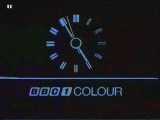
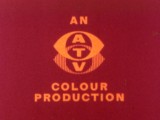
On 16 May 1969 the Postmaster General finally gave BBC1 and ITV permission to start their UHF colour services, and by 1 January 1970 colour television could be received in areas served by these main transmitters: Crystal Palace (London), Winter Hill (South Lancashire/Manchester), Sutton Coldfield (Midlands), Emley Moor (South Yorkshire), Black Hill (Central Scotland), Rowridge (Central Southern England), and Dover (East Kent/Sussex).
 During the early 1970s much of England, Wales, Northern Ireland, and Scotland were still totally without colour television, and despite a mini-budget in July 1971 boosting sales, by 1972 only 17% of households had colour television receivers though the Olympic Games in that year did help to stimulate interest. However tales of overheating and unreliability still put off many potential purchasers and the cost was still prohibitive for some, though TV rental provided an affordable alternative to outright purchase.
During the early 1970s much of England, Wales, Northern Ireland, and Scotland were still totally without colour television, and despite a mini-budget in July 1971 boosting sales, by 1972 only 17% of households had colour television receivers though the Olympic Games in that year did help to stimulate interest. However tales of overheating and unreliability still put off many potential purchasers and the cost was still prohibitive for some, though TV rental provided an affordable alternative to outright purchase.
 By 1976 colour television sets were smaller, far more reliable and they no longer caught fire due to their ‘solid-state’ design, meaning that no valves are used apart from the picture tube. Portable colour televisions became available, though most of these were still tied to the mains supply due to their high power consumption; the exceptions usually had 10 inch or smaller screens. Picture quality became vastly improved, and the falling price of sets meant that the number of colour televisions had rapidly increased to over 7.5 million by 1976. The Home Entertainment Show 1976 in London showcased recent innovations such as teletext, and colour transmissions finally reached the Channel Islands in the same year (it took a long time due to the technical difficulties in providing a UHF link to England).
By 1976 colour television sets were smaller, far more reliable and they no longer caught fire due to their ‘solid-state’ design, meaning that no valves are used apart from the picture tube. Portable colour televisions became available, though most of these were still tied to the mains supply due to their high power consumption; the exceptions usually had 10 inch or smaller screens. Picture quality became vastly improved, and the falling price of sets meant that the number of colour televisions had rapidly increased to over 7.5 million by 1976. The Home Entertainment Show 1976 in London showcased recent innovations such as teletext, and colour transmissions finally reached the Channel Islands in the same year (it took a long time due to the technical difficulties in providing a UHF link to England).
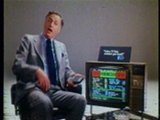 By the end of the 1970s manufacturers were looking to add more features to their televisions, and the advent of reasonably priced silicon chip circuitry meant that special features such as teletext could be added (a free information service whereby information is transmitted as ‘pages’) as well as sometimes other short-lived features such as ‘viewdata’ (a primitive internet-style service using crude block graphics as well as text) and bat-and-ball style video games. Teletext was the only special feature that became popular because it was cheap to add and free to use, together with remote control operation and electronic tuning. Early wireless remote controls mainly used ultrasound waves which were inaudible to humans but could make dogs bark.
By the end of the 1970s manufacturers were looking to add more features to their televisions, and the advent of reasonably priced silicon chip circuitry meant that special features such as teletext could be added (a free information service whereby information is transmitted as ‘pages’) as well as sometimes other short-lived features such as ‘viewdata’ (a primitive internet-style service using crude block graphics as well as text) and bat-and-ball style video games. Teletext was the only special feature that became popular because it was cheap to add and free to use, together with remote control operation and electronic tuning. Early wireless remote controls mainly used ultrasound waves which were inaudible to humans but could make dogs bark.
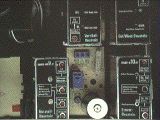 The 1980s and 1990s saw further developments in television design and technology. As early as the mid 1970s the German set maker Grundig had introduced a system using easily changeable internal modules with diagnostic lights so the set could even tell the engineer which part needed replacing. This idea never caught on but the basic concept of making the set simpler and cheaper to make remained. In 1983 Ferguson introduced the TX100 chassis, with some impressive claims (23% fewer adjustments, 5% fewer components, etc.), and new technologies continued to add features and reduce costs. NICAM stereo sound was introduced at the end of the 1980s, and television has continued to evolve since then with digital widescreen broadcasting commencing in 1998, high definition (HD) broadcasts beginning in the UK in 2006, and ultra high definition (UHD, or 4K) broadcasting is now a reality; experiments using this technology having taken place from 2012 onwards. Even higher resolutions are currently being considered though another brief flirtation with 3D television seems to have ended, at least for the time being.
The 1980s and 1990s saw further developments in television design and technology. As early as the mid 1970s the German set maker Grundig had introduced a system using easily changeable internal modules with diagnostic lights so the set could even tell the engineer which part needed replacing. This idea never caught on but the basic concept of making the set simpler and cheaper to make remained. In 1983 Ferguson introduced the TX100 chassis, with some impressive claims (23% fewer adjustments, 5% fewer components, etc.), and new technologies continued to add features and reduce costs. NICAM stereo sound was introduced at the end of the 1980s, and television has continued to evolve since then with digital widescreen broadcasting commencing in 1998, high definition (HD) broadcasts beginning in the UK in 2006, and ultra high definition (UHD, or 4K) broadcasting is now a reality; experiments using this technology having taken place from 2012 onwards. Even higher resolutions are currently being considered though another brief flirtation with 3D television seems to have ended, at least for the time being.
As of January 2013 there were still 13,202 active black and white TV licences in use, even after the final completion of the digital TV switchover in 2012 (the last UK region to shut down its analogue transmissions being Northern Ireland).